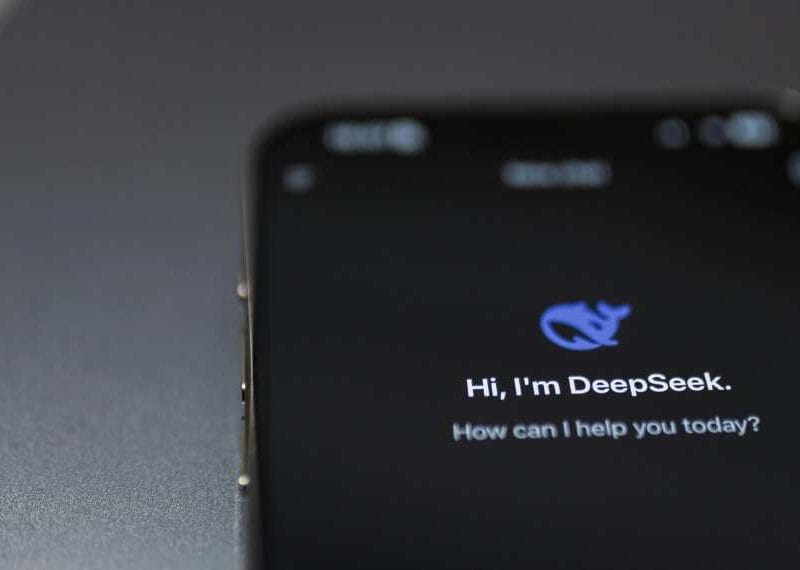Disrupting US Healthcare: Tech Leaders Pinpoint HealthTech’s Next Big Impact
The U.S. healthcare system stands as a vast and intricate web, grappling with a trifecta of persistent challenges: escalating costs, uneven access to care, and inconsistent quality outcomes.
With healthcare expenditures projected to soar to $6.8 trillion by 2030 (CMS, 2025) and 30 million Americans still uninsured (KFF, 2025), the strain on this sprawling network is palpable.
Yet, amid these complexities, HealthTech is emerging as a beacon of hope, wielding cutting-edge innovations to revolutionize patient outcomes, streamline operational efficiencies, and extend care to underserved regions.
The Techronicler team turned to a distinguished panel of thought leaders and experts from the tech community to address a pressing question that cuts to the heart of this transformation:
“Innovations in HealthTech are targeting improvements in patient outcomes, efficiency, and access within the vast U.S. healthcare system. In your opinion (professional or personal), which specific area of the U.S. healthcare system urgently requires positive disruption by HealthTech? Why?”
Their compelling responses illuminate the urgent need for disruption and unveil the transformative potential of HealthTech to reshape the future of healthcare, offering a roadmap for a more equitable and effective system.
Read on!
Lawrence Kosick - GetSetup
One of the most urgent areas in need of HealthTech disruption is preventative care access, especially for older adults in rural and underserved communities. These populations often face transportation barriers, digital illiteracy, and limited provider availability. Technology must be innovative and accessible, helping individuals stay healthy before health crises emerge.
At GetSetUp, we’re addressing this by offering virtual live and on-demand peer-led health and wellness classes and resources, helping older adults build digital confidence, reduce isolation, and stay engaged in preventative behaviors like fitness, fall prevention, nutrition, and mental health.
With programs tailored to diverse learning needs and multilingual support, our platform reaches tens of thousands in rural areas each week, helping health systems and governments scale care, close equity gaps, and reduce downstream costs through early, community-based engagement. Working to improve preventative care access can help people stay healthier longer and reduce the cost of care.

Lawrence Kosick
President & Co-Founder, GetSetup
Suzie Sfarra - CipherHealth
The most urgent opportunity for disruption in U.S. healthcare lies in transforming reactive care into proactive, continuous engagement.
Today’s system still relies on episodic interactions where patients are largely invisible between appointments. With new innovations, especially around AI, we have the opportunity to fundamentally change that by synthesizing signals across EHRs, devices, and patient interactions to detect risk, predict needs, and initiate timely outreach without human intervention.
As an example, here at CipherHealth, we’re embedding AI into patient engagement workflows to deliver real-time, tailored communication that not only anticipates problems but resolves them before escalation.
This shift from passive monitoring to intelligent, automated action has the potential to reduce preventable harm, close care gaps, and radically improve how, when, and why we engage patients.
That’s true disruption and allows care to be provided at the highest quality while minimizing costs.

Suzie Sfarra,
Chief Product Officer, CipherHealth
Bailyn Fields - Boomer Benefits
One area that urgently needs disruption is patient follow-up and care coordination after hospital discharge. Too often, patients leave without fully understanding their medications or follow-up plans, which leads to avoidable readmissions and complications.
HealthTech could bridge this gap by using simple, accessible tools to track recovery, flag concerns early and keep communication open between patients and care teams. A digital check-in or messaging system could make a real difference, especially for older adults or those managing multiple conditions.
Many patients want to do the right thing for their health but feel lost once they’re back home. Giving them a reliable way to ask questions and feel supported could improve outcomes and reduce unnecessary strain on the system.

Bailyn Fields
Sales Director, Boomer Benefits
Joy Kurber - Carex Consulting Group
At a recent healthtech conference, one theme kept surfacing: the disconnect between health plans and health systems—especially around preventative care. Health systems focus on treating illness; health plans focus on managing long-term cost and risk. But without true collaboration, we miss critical opportunities to improve outcomes and reduce costs.
A major reason for this is the zero-sum nature of U.S. care delivery, which often pits payors and providers against each other. I met startups using AI to help payors avoid paying claims—and others using AI to help providers maximize billing and fight denials. This tug-of-war reflects a deeply misaligned system.
Many of the challenges we’ve talked about for years—provider burnout, patient access issues, rural hospital closures—are symptoms of this root conflict. HealthTech companies focused on solving these problems must also look upstream.
The real opportunity lies in building tools that bridge the gap: aligning incentives, connecting data, and fostering shared visibility. If we want sustainable, preventive, and equitable care, we have to stop treating payors and providers as adversaries, and start building for collaboration.

Joy Kurber
Healthtech Director, Carex Consulting Group
Dr. Taher Saifullah - Spine & Pain Institute, LA
In my professional opinion as a spine and pain management doctor, the area of the US healthcare system most urgently requiring positive disruption by HealthTech is interoperability and data exchange between disparate systems.
Currently, patient information is often fragmented across various electronic health records (EHRs), imaging systems, and specialist platforms. This lack of seamless integration leads to significant inefficiencies: repeated tests, delayed diagnoses, incomplete medical histories, and ultimately, suboptimal patient care.
For spine and pain patients, who often see multiple specialists (neurologists, orthopedists, physical therapists, pain specialists), this fragmentation is particularly detrimental.
HealthTech solutions focusing on secure, standardized, and real-time data exchange—perhaps utilizing blockchain or advanced APIs—would drastically improve care coordination, reduce administrative burden, and ensure that every provider has a complete picture of the patient’s journey, fostering more informed and efficient decision-making.
Savana Howe - Dr. Howe Psychology
As a licensed clinical psychologist, I’ve seen how gaps in our healthcare system—especially around mental health—can severely impact patient well-being. One area in urgent need of HealthTech-driven transformation is the integration of behavioral health into primary care.
Mental health concerns are often first identified in primary care settings, yet many providers lack the necessary tools or training to address them effectively. This leads to fragmented care, delayed treatment, and increased suffering. HealthTech can play a crucial role in solving this by offering integrated digital screening tools, real-time mental health assessments, telehealth access, and data-driven support within primary care environments.
By streamlining mental health services into everyday medical care, we can reduce stigma, ensure early intervention, and create a more holistic, efficient care experience. This kind of innovation doesn’t just improve outcomes—it fills a long-standing gap in the system that has real consequences for millions of patients.

Savana Howe
Founder, Clinical Psychologist
Allan Bruun - Simpler QMS
The component of the system that most desperately needs repair is the old-fashioned method to compliance and quality record handling during development and manufacturing.
These companies are still bogged down by siloed systems, manual spreadsheets, and error-prone validation documents. That delay slows down audits, stalls regulatory approvals, and delays patient access to new products. We have seen firms lose weeks preparing for FDA inspections simply because their documentation systems weren’t audit-ready.
The HealthTech disruption right here is not showy, it’s substituting slow-moving paper chains for pre-validated, cloud-based systems. Where a quality issue occurs, the system must demonstrate who approved what, when, and why instantly. That’s how it’s safer and faster to get regulated treatments into care pathways.
When you simplify that documentation layer where all your SOPs, CAPAs, and risk analyses reside, you don’t just benefit companies. You enable patients to view innovation quicker, with less compliance risk in between.

Allan Bruun
Co-founder, SimplerQMS
Jenny Hoffmann - Story of Strength
According to the Centers for Disease Control, severe maternal morbidity occurs 100 times more often than maternity mortality. Yet, the medical community is not actively tracking data related to these serious—and often severe—complications.
Many pregnancy-related complications can be effectively managed or avoided with proper education and awareness.
Recently, I launched the website Story of Strength in an effort to build the most expansive database of information about prenatal, pregnancy, childbirth, and postpartum complications.
By gathering these pertinent details, we can advocate for meaningful change, prevent additional suffering, and save lives.

Jenny Hoffmann
Founder, Story of Strength
Blen Tesfu - Welzo
I think the area of the US healthcare system that needs a health tech disruption the most is preventive care. Today’s health care is geared toward curing disease, not preventing it. We can slash the burden of chronic diseases and hospitalizations by transitioning to proactive, tech-enabled care.
Wearable sensors and remote monitoring tools or AI-based platforms are available that are able to recognize early signs of health problems before they become severe. These tools facilitate care that is ongoing, and individualized and ensures patients and providers act in time. It can offer better long-term outcomes by providing predictive foresight, informed by real-time data.
Resources such as telehealth and mobile healthy apps extend the reach of care for people who otherwise wouldn’t get help. By creating such readiness for prevention, we can construct a healthcare system that is healthier and more sustainable.

Blen Tesfu
MD, Welzo
On behalf of the Techronicler community of readers, we thank these leaders and experts for taking the time to share valuable insights that stem from years of experience and in-depth expertise in their respective niches.
If you wish to showcase your experience and expertise, participate in industry-leading discussions, and add visibility and impact to your personal brand and business, get in touch with the Techronicler team to feature in our fast-growing publication.












